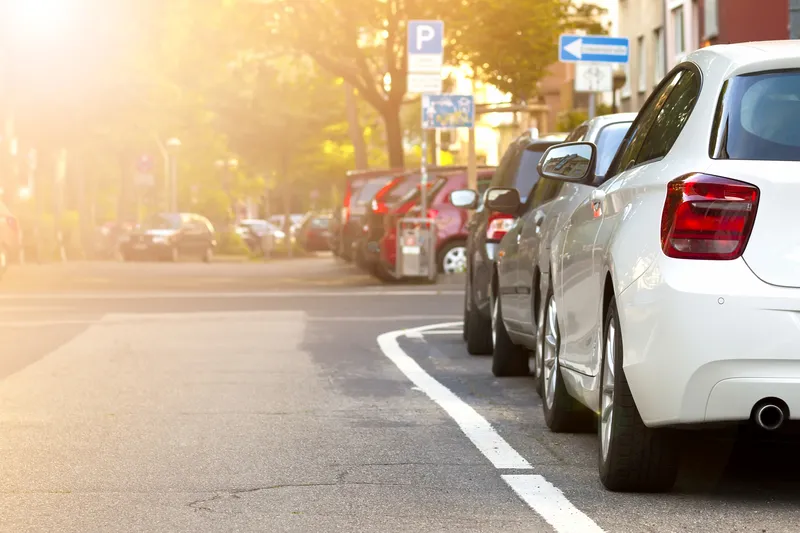Switching from diesel to gas, reducing rolling resistance and aerodynamic drag and introducing more hybrid and electric vehicles are identified as key opportunities for further cutting carbon and improving efficiency in the road freight sector, according to a new report commissioned by the Transport Knowledge Transfer Network (TKTN) and the Low Carbon Vehicle Partnership (LowCVP). The report, written by Ricardo-AEA for the project partners, focuses on the key technical opportunities, and identifies options
December 4, 2012
Read time: 4 mins
Switching from diesel to gas, reducing rolling resistance and aerodynamic drag and introducing more hybrid and electric vehicles are identified as key opportunities for further cutting carbon and improving efficiency in the road freight sector, according to a new report commissioned by the Transport Knowledge Transfer Network (TKTN) and the Low Carbon Vehicle Partnership (LowCVP).
The report, written by Ricardo-AEA for the project partners, focuses on the key technical opportunities, and identifies options to overcome the main barriers to the adoption of carbon reduction technologies in the road freight sector which is responsible for around 7 per cent of the UK’s total CO2 emissions.
The report highlights that with two leading UK companies specialising in dual fuel technology, encouraging a shift to gas, both compressed (CNG) and liquid (LNG), could provide significant growth and export opportunities for the UK as well as reducing well-to-wheel (WTW) emissions by up to 65 per cent if the gas (methane) used is derived from a renewable source (biomethane).
Hybrid and pure electric vehicles are particularly suited to urban delivery and municipal duties, which account for about 14 per cent of all HGV CO2 emissions, and could deliver 20-50 per cent emissions savings on a WTW basis, with significant added benefits in terms of urban air quality and noise reduction.
With more than half of the energy transmitted to the wheels of a typical long haul HGV estimated to be lost in rolling resistance and over a third as aerodynamic drag the report says that more could be done to encourage the adoption of technologies such as low rolling resistance and single wide tyres or aerodynamic aids, which together may offer up to 10 per cent WTW CO2 savings while having the potential to also cut vehicle operators’ costs.
The Ricardo-AEA report has fed in to the work of the task force on fuel efficient low emission HGV technologies, a joint industry/government initiative aimed at promoting the use of such technologies in road freight.
Led by the1837 Department for Transport, the task force membership includes the LowCVP, the 6982 Society of Motor Manufacturers and Traders (SMMT), the Transport Knowledge Transfer Network (KTN), The 6500 Chartered Institute of Logistics and Transport, 6983 Freight Transport Association (FTA) and the 6985 Road Haulage Association (RHA).
The report found that long haul and regional deliveries account for about 70 per cent of UK HGV CO2 emissions and therefore suggests that efforts should be focused here.
Andy Eastlake, managing director of the LowCVP said: “Switching from diesel to gas provides one of the clearest opportunities for cutting freight sector emissions. The low carbon truck trials are a good start but we need a long-term road transport gas strategy to build on the progress made so far. Like the car market, the hybrid truck market would benefit from incentives to encourage early adoption. Accrediting fuel saving technologies such as aerodynamic aids and low-rolling-resistance tyres would also accelerate market uptake of these helpful carbon and, potentially, cost-reduction technologies. Importantly, many of these opportunities are both complimentary to each other and to the wealth of work already underway within the industry using telematics, driver training and logistics efficiency improvements.”
Paul Everitt, SMMT chief executive stated: “The UK automotive industry has already demonstrated the progress that can be made when government and industry work together to achieve mutual goals. This collaborative report into enhancing uptake of low carbon technology builds on the good work of the Automotive Council technology roadmap and the Low Carbon Truck Trial. It now requires action from government and other stakeholders to deliver gas, hybrid and electric commercial vehicles and the infrastructure required to support them.
“The recommendations set out in the report clearly identify the technologies we should focus on and the measures necessary to achieve a lower carbon commercial vehicle sector. SMMT looks forward to working with the Minister and the Task Force to bring home the benefits of these low carbon technologies.”
Neil Ridley, Transport KTN director commented: “The freight sector is of strategic importance to the UK economy and we need to support and aid its adoption of low carbon technologies. Drawing on learning from other sectors, this report enables all involved in the freight and logistics industry to easily identify the most significant contributors to carbon reduction and fuel improvements by vehicle duty cycle.
“The Transport KTN is delighted to have supported this initiative as we continue to work with government and key strategic industry players to help capitalise on the benefits that these low carbon technologies can offer to the freight and logistics industry and the wider community."
The report, written by Ricardo-AEA for the project partners, focuses on the key technical opportunities, and identifies options to overcome the main barriers to the adoption of carbon reduction technologies in the road freight sector which is responsible for around 7 per cent of the UK’s total CO2 emissions.
The report highlights that with two leading UK companies specialising in dual fuel technology, encouraging a shift to gas, both compressed (CNG) and liquid (LNG), could provide significant growth and export opportunities for the UK as well as reducing well-to-wheel (WTW) emissions by up to 65 per cent if the gas (methane) used is derived from a renewable source (biomethane).
Hybrid and pure electric vehicles are particularly suited to urban delivery and municipal duties, which account for about 14 per cent of all HGV CO2 emissions, and could deliver 20-50 per cent emissions savings on a WTW basis, with significant added benefits in terms of urban air quality and noise reduction.
With more than half of the energy transmitted to the wheels of a typical long haul HGV estimated to be lost in rolling resistance and over a third as aerodynamic drag the report says that more could be done to encourage the adoption of technologies such as low rolling resistance and single wide tyres or aerodynamic aids, which together may offer up to 10 per cent WTW CO2 savings while having the potential to also cut vehicle operators’ costs.
The Ricardo-AEA report has fed in to the work of the task force on fuel efficient low emission HGV technologies, a joint industry/government initiative aimed at promoting the use of such technologies in road freight.
Led by the
The report found that long haul and regional deliveries account for about 70 per cent of UK HGV CO2 emissions and therefore suggests that efforts should be focused here.
Andy Eastlake, managing director of the LowCVP said: “Switching from diesel to gas provides one of the clearest opportunities for cutting freight sector emissions. The low carbon truck trials are a good start but we need a long-term road transport gas strategy to build on the progress made so far. Like the car market, the hybrid truck market would benefit from incentives to encourage early adoption. Accrediting fuel saving technologies such as aerodynamic aids and low-rolling-resistance tyres would also accelerate market uptake of these helpful carbon and, potentially, cost-reduction technologies. Importantly, many of these opportunities are both complimentary to each other and to the wealth of work already underway within the industry using telematics, driver training and logistics efficiency improvements.”
Paul Everitt, SMMT chief executive stated: “The UK automotive industry has already demonstrated the progress that can be made when government and industry work together to achieve mutual goals. This collaborative report into enhancing uptake of low carbon technology builds on the good work of the Automotive Council technology roadmap and the Low Carbon Truck Trial. It now requires action from government and other stakeholders to deliver gas, hybrid and electric commercial vehicles and the infrastructure required to support them.
“The recommendations set out in the report clearly identify the technologies we should focus on and the measures necessary to achieve a lower carbon commercial vehicle sector. SMMT looks forward to working with the Minister and the Task Force to bring home the benefits of these low carbon technologies.”
Neil Ridley, Transport KTN director commented: “The freight sector is of strategic importance to the UK economy and we need to support and aid its adoption of low carbon technologies. Drawing on learning from other sectors, this report enables all involved in the freight and logistics industry to easily identify the most significant contributors to carbon reduction and fuel improvements by vehicle duty cycle.
“The Transport KTN is delighted to have supported this initiative as we continue to work with government and key strategic industry players to help capitalise on the benefits that these low carbon technologies can offer to the freight and logistics industry and the wider community."








